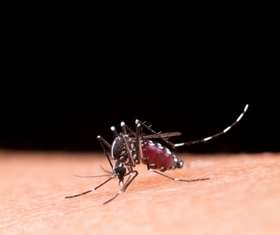Frankincense, the aromatic resin derived from the Boswellia tree, has long been a staple in traditional medicine, religious ceremonies, and perfumes. Amid its myriad uses, a fascinating question arises – does frankincense truly possess the power to repel bugs? In this article, we delve into the scientific evidence surrounding frankincense as an insect repellent, aiming to provide a comprehensive understanding of its efficacy.
Understanding Insect Repellents
Before delving into the specifics of frankincense, it’s crucial to grasp the concept of insect repellents. These substances, whether applied to the skin, clothing, or surfaces, serve the purpose of deterring insects from biting, feeding, or settling. The significance of effective insect repellents extends beyond mere discomfort, as they play a pivotal role in preventing insect-borne diseases such as malaria, dengue fever, and Lyme disease.
Frankincense as an Insect Repellent: Unveiling the Evidence
Scientific inquiry into the insect-repellent potential of frankincense reveals promising findings. A study published in the Journal of Vector Ecology suggests that frankincense resin demonstrates effectiveness against mosquitoes, specifically Anopheles stephensi and Culex quinquefasciatus, both in adult and larval stages. This study observed a notable reduction in mosquito numbers, indicating the repellent properties of frankincense.
In another study published in the Journal of Insect Science, frankincense oil emerged as a formidable opponent to the Aedes aegypti mosquito. Surprisingly, the study found that frankincense oil rivaled the synthetic insect repellent DEET in repelling Aedes aegypti mosquitoes for up to three hours, highlighting its potential as a natural alternative.
Further research expands the scope of frankincense’s insect-repelling prowess. The Journal of Pest Science reports its effectiveness against houseflies (Musca domestica), with frankincense resin demonstrating significant repellent effects and toxic impact on larvae. Additionally, a study in the Journal of Applied Entomology highlights frankincense oil’s efficacy in repelling ants.
The Mechanism Behind Frankincense’s Bug-Repelling Charm
While the exact mechanism remains elusive, it is hypothesized that the aromatic compounds within frankincense contribute to its insect-repelling qualities. These compounds, known for their strong odor, may either mask the human scent or produce an aroma unpleasant to insects. Furthermore, certain components within frankincense may exhibit toxicity to insects, prompting them to avoid treated areas.
Utilizing Frankincense as an Insect Repellent
Frankincense offers versatility in its application as an insect repellent, available in resin, oil, and incense forms. Here are practical ways to incorporate frankincense into your bug-repelling arsenal:
Incense
Harness the aromatic power of frankincense by burning it as incense. Light the incense and place it in areas where insects are prevalent, such as patios, porches, or outdoor dining spaces.
Oil
For a personal bug shield, dilute frankincense oil with a carrier oil like coconut or jojoba oil. Apply the mixture to your skin or clothing, avoiding sensitive areas and open wounds.
Resin
Burn frankincense resin on a charcoal disc in a heat-resistant dish to produce smoke that repels insects. Ideal for outdoor spaces like patios or dining areas.
Precautions and Side Effects
While generally considered safe, it’s essential to exercise caution when using frankincense. Conduct a patch test before applying oil or resin to the skin, and always dilute with a carrier oil. Frankincense should not be ingested, as it can lead to digestive issues such as nausea and vomiting.
FAQs
Here are some FAQs related to Does Frankincense repel Bugs
While frankincense is generally considered safe for adults, it’s best to consult with a healthcare professional before using it on children or pets, especially in concentrated forms.
It’s recommended to dilute frankincense oil with a carrier oil before applying it to the skin to minimize the risk of irritation or sensitization.
The duration of effectiveness may vary depending on factors such as concentration, application method, and environmental conditions.
Some individuals may experience allergic reactions or skin sensitivities when using frankincense oil. It’s essential to perform a patch test before widespread use.
Burning frankincense resin as incense indoors may help repel bugs, but it’s essential to ensure proper ventilation to avoid inhaling excessive smoke.
Conclusion
The evidence supporting frankincense as an insect repellent is compelling. Studies indicate its effectiveness against various insect species, showcasing its potential as a natural alternative to synthetic repellents. Whether in resin, oil, or incense form, frankincense stands as a versatile ally in the battle against bugs. As research progresses, a deeper understanding of the mechanisms at play may further elevate frankincense’s role in insect control.









Find Us on Socials